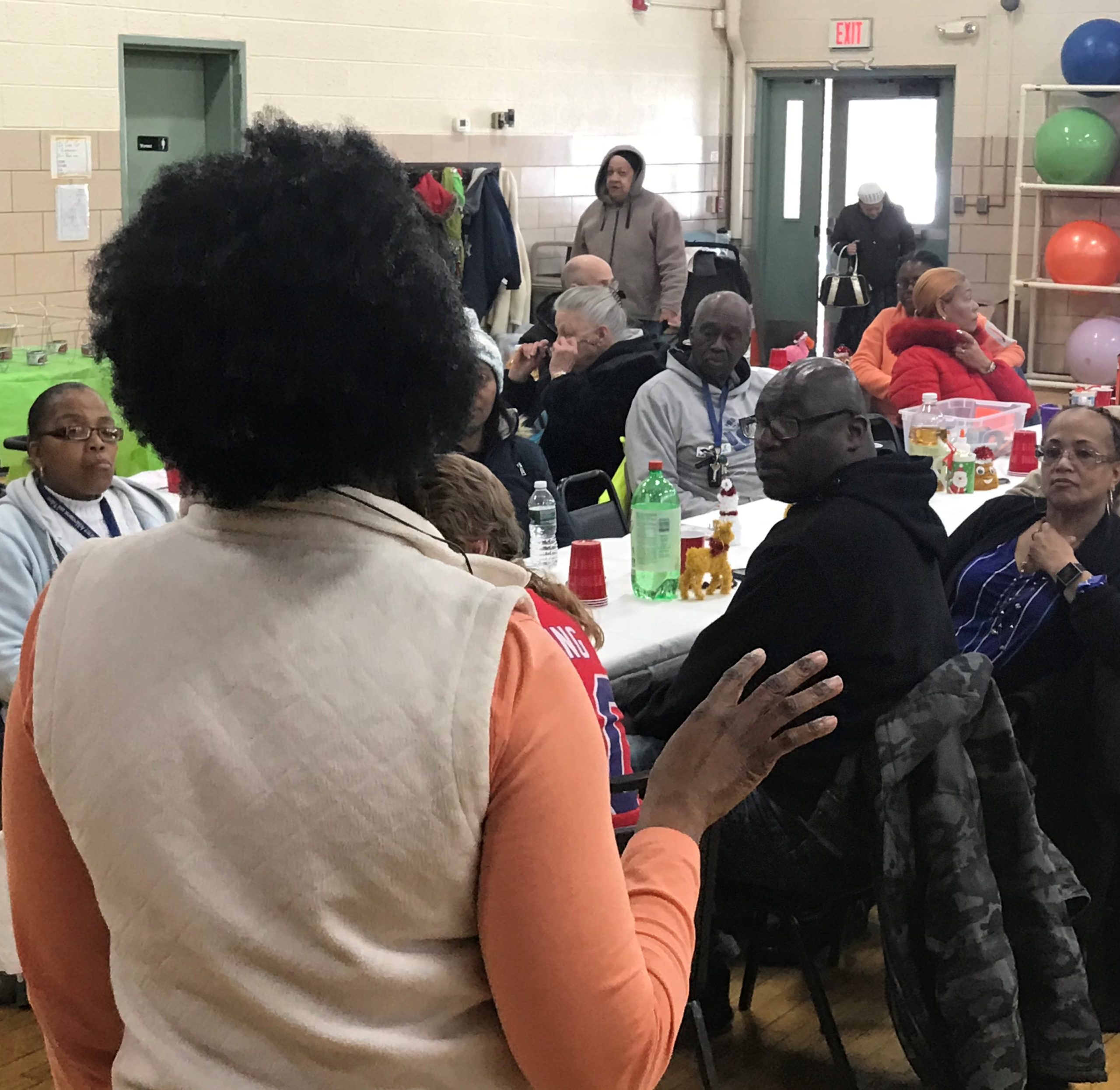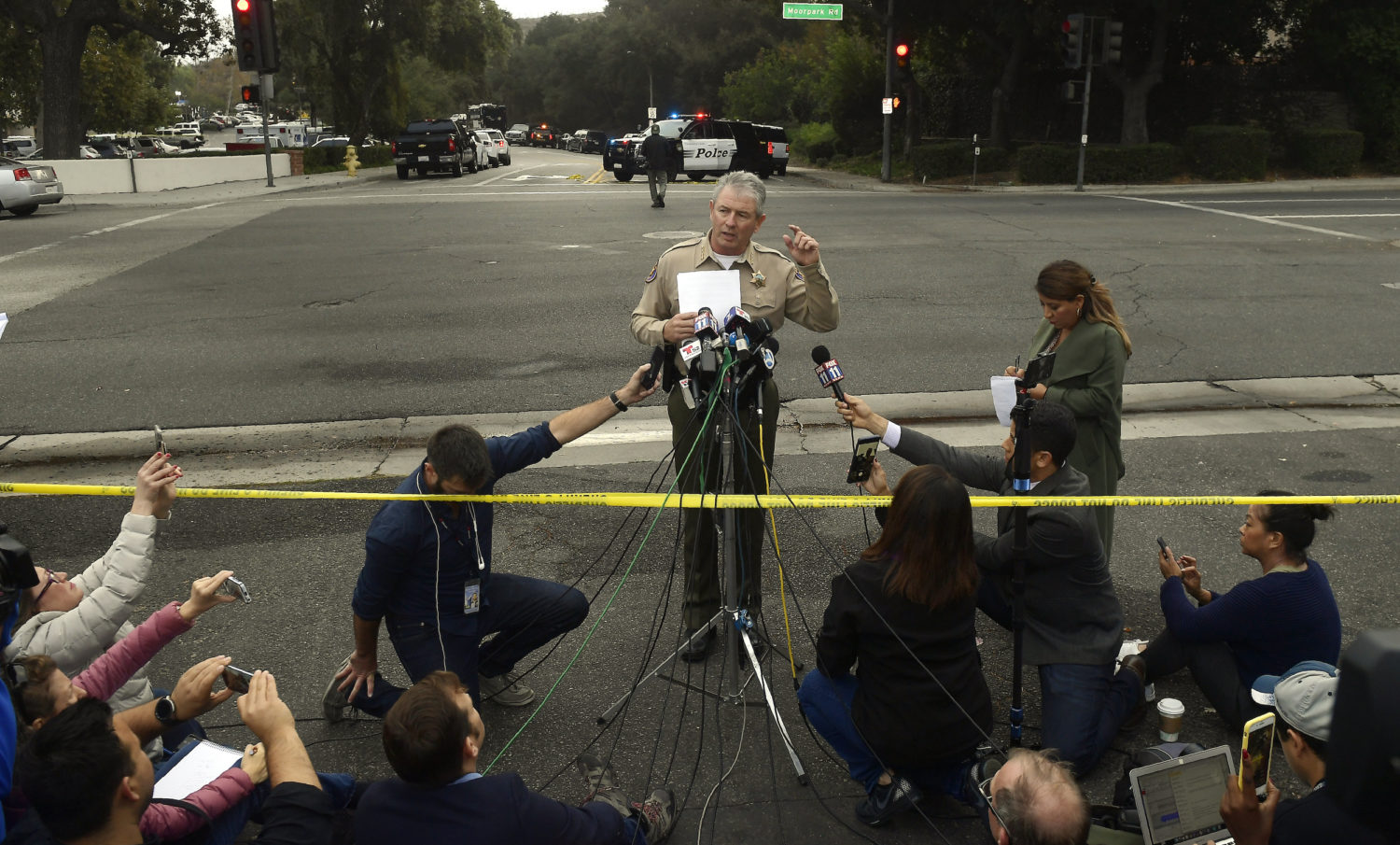As the Atlantic regional editor for Gannett, Hollis Towns is responsible for setting the strategy and tone of the papers within his region. Two years ago, as he was looking at story budgets across his papers, he noticed something concerning.
“I saw more and more reactive crime stories that didn’t connect the dots,” said Towns, who is also Gannett’s vice president for local news. “I saw more people, Black and brown folks who look like me, splattered across all of our front pages and on our websites, and no context offered for what happened and no follow up offered after the story had initially run.”
Editors at the papers in the Atlantic region also knew they had a problem. In New York, Democrat and Chronicle executive editor Michael Kilian realized there was a disconnect between the paper’s coverage of Rochester and what he was personally seeing. An analysis of one month of coverage in 2019 revealed that 20% of the paper’s stories were crime-related. But criminal activity didn’t make up 20% of everyday life in Rochester.
Meanwhile, Arizona Republic director for product and audience innovation P. Kim Bui was reexamining her own paper’s breaking news coverage. The paper had taken a “publish everything” approach until then, covering even the most minor incidents like house fires and missing persons cases that were solved in hours.
Something needed to change. On the East Coast, Kilian reshaped the Democrat and Chronicle’s public safety coverage and helped put together a comprehensive plan to better cover crime in the Atlantic region. In the West, Bui realigned her team’s priorities and drew up a set of values to guide crime reporting.
Their work has led to a Gannett-wide effort to reimagine crime coverage. Journalists across the newspaper chain, the largest in the country, have been attending trainings this summer to learn how to be more enterprising in their crime coverage, rather than reactive. The goal is to move beyond coverage that lacks context and relies on police narratives to the detriment of marginalized communities.
“We had these pieces already in place, bits and pieces across the company,” said Gannett president of news Maribel Perez Wadsworth. “And then there was this more concerted effort that had been well underway and being piloted in the Atlantic group, and it felt right to move more quickly to scale the learnings and scale the best practices across the whole network.”
What’s changing
Gannett’s new approach to crime coverage, editors say, will focus on offering context, identifying trends and following stories to their end.
In 2018, Gannett started removing mugshot galleries from its sites, a process it finished last year when it removed galleries from its former GateHouse sites. Moving forward, its papers will severely limit the use of mugshots in stories.
Other changes include sunsetting police blotters and encouraging reporters to focus on trends, rather than individual crimes. For example, the Republic, which is based in Phoenix, used to report on individual pedestrian fatalities without explaining to readers why they were noteworthy, Bui said. So the paper decided to track these incidents, leading to a piece that explores why Arizona has one of the highest rates of pedestrian deaths in the country.
The Republic has also started adding “context lines,” or paragraphs explaining why they’re covering the story, to their articles. For instance, a Republic article from Aug. 8 about hot-car deaths included the following paragraph:
Fewer children died from being left in a hot car in the U.S. in 2020, experts say, as a result of the COVID-19 pandemic keeping many people at home. The only child hot-car death in Arizona in 2020 was 3-year-old Delilah Jones, who got into her mother’s car in a parking lot by herself on Aug. 30, 2020. In 2019, there were four hot-car cases in Arizona; all were children unknowingly left in a car.
Part of offering additional context is ensuring that non-police sources are used in stories. For years, journalists used to take police statements at face value, treating law enforcement as the “de facto voice” even when there were suspicions that they had an agenda, Towns said.
But the police’s perspective can’t be “the end of the story,” The Burlington County (New Jersey) Times executive editor Audrey Harvin said. There are victims, the victims’ families and community members to consider, and a fair and balanced story would include how the crime affected them.
The Times recently covered a man who was arrested after being caught on tape shouting racial slurs. In keeping with their new approach to crime coverage, Harvin instructed the paper’s diversity and inclusion reporter to talk to the people at the scene to understand how they were feeling.
“Then we wanted to talk to the target of this man’s racist rant. And we were fortunate enough — because we’re starting to regain that trust — to get an exclusive interview with the victim,” Harvin said. “He trusted our reporter, and we were able to tell his story in the way that he wanted to tell us, not the way we thought it should be told.”
The Times continued to follow that story after the initial arrest. In the past, it wasn’t uncommon for a crime to receive zero follow-up coverage. But that is changing. The goal now is to cover crimes from beginning to end.
“Instead of trying to answer ‘What?’ all the time, we’re looking at ‘Who?’ ‘How?’ and ‘Why?’” Kilian said, noting that the more in-depth stories have seen longer read times and helped gain subscribers. “We’re storytellers, and we have to tell stories and tell them thoroughly. When there’s a human dimension, they’re always better when the whole community responds.”
The changes come as other news organizations around the country reexamine their crime coverage. The Associated Press, for example, announced last month it would stop naming suspects in minor crime stories, and The Boston Globe launched a program earlier this year to allow people mentioned in older articles to submit take-down requests.
Kelly McBride, chair of the Craig Newmark Center for Ethics and Leadership at Poynter, said it’s encouraging that a large chain like Gannett is taking these steps. The reporters who learn these new techniques will be able to influence their peers, she said.
“What I’m hoping is that if enough news media over time change the narrative that they’re telling about crime so that it becomes more accurate and more actionable … then citizens will have a better understanding of their own communities and the communities around them.”
Fixing a ‘canyon of distrust’

In 2019, the Democrat and Chronicle held “mobile newsrooms” throughout Rochester to rebuild relationships with communities they had hurt with their previous coverage. Reporters and editors spent time at different community sites, listening to local residents. (Courtesy: Gannett)
The Democrat and Chronicle first started reexamining its crime coverage in May 2019 as part of the Table Stakes program, which helps news organizations tackle “critically important challenges.” The paper wanted to become a more diverse and inclusive organization in its storytelling and to address the “canyon of distrust” between itself and members of marginalized communities, Kilian said. (Disclosure: Poynter hosts a portion of the Table Stakes program.)
In an effort to build relationships with local communities of color, the paper started a “mobile newsroom” program. Every week, reporters and editors set up workstations in a community site like a library or a recreation center and spent time listening to local residents.
“Our goal was to go learn these neighborhoods, talk to residents, find new sources,” said Sheila Rayam, who was the community engagement editor at the Democrat and Chronicle. She is now the executive editor of the Observer-Dispatch and The Times Telegram in central New York. “One of the things we learned is that just us being there wouldn’t mean that the throngs of community members would be happy to come and talk to us.”
In those conversations, some local residents expressed frustration with the paper’s crime coverage. The paper only covered their communities when crimes occurred and ignored positive developments.
Through those mobile newsrooms, the Democrat and Chronicle gathered feedback and developed sources. They gave 50 people free subscriptions for a year to form a “digital advisory group,” a closed Facebook group that gave real-time feedback on headlines and stories.
Those connections helped “immensely” when the pandemic began, Rayam said. The paper had developed sources in diverse neighborhoods that allowed them to tell stories about health disparities and the impacts of the economic slowdown.
There is still lingering distrust, which is unsurprising after “a century or more of disconnect,” Kilian said. But there are some early signs of progress. For example, a Gannett survey from earlier this year showed that trust among Black audiences in Rochester was higher than most Gannett papers.
Building trust is an ongoing process that requires active investment from the newsroom, said Poynter director of training and diversity Doris Truong: “It’s an ongoing effort to show that community through the news coverage that you’re doing that you recognize that they have rich and full lives.”
Using the Democrat and Chronicle’s experience, Kilian helped develop a crime coverage plan for the rest of the Atlantic region. That pilot has since been expanded to the training that is ongoing across Gannett’s roughly 250 newsrooms.
Many of these papers are still in the middle of implementing these changes and gathering reader feedback. McBride warned that the process could prove challenging. Covering individual crimes and focusing on sensational stories that get clicks is less labor-intensive than identifying trends. Some readers may also be angry, McBride said. For years, newspapers have perpetuated misleading narratives about crime, falsely implying that telling readers about individual crimes will keep them safe.
Bui said she is less worried about the people who will be upset by the changes the Republic is making.
“I worry more about the people who probably don’t read us anymore because of our mistakes in the past and rebuilding relationships with them,” Bui said. “We have meetings with community leaders of different groups — African American leaders, Latino leaders — and (we) tried to tell them that we’re starting to do this. And I think we are in the moment where they would like to see the action.
“They need to see a fair amount of cumulative action before they start even vaguely trusting us again.”
This article was originally published Aug. 9, 2021.







Smoke and mirrors, the day a reporter and/or reporters from Gannett or any other corporate run news media actually; conducts extensive ride-a-longs with officers on the road, spends half a dozen nights at jail intake, spends a holiday week with a county coroner, conducts follow-ups with social service workers, tags along with probations officers for extended periods, and goes to a few dozen funerals of innocent victims of gang violence, maybe and only maybe with they get the big picture of crime and how it effects communities at risk. It 6 months to lame change is going to go back to;” If it bleeds it leads.”
I wish news organizations. including Gannett, would cover the civil courts.
I would guess the reason they don’t is because civil matters aren’t as “sexy” as news that bleeds therefore leads. Civil matters, as the thought process goes, don’t involve violence, death and other criminal acts and the only “currency” of the civil courts is (no pun intended) money.
In the absence of media watchdogs, civil courts are given to the excesses and overreach that come with the lack of scrutiny of too much power vested in too few hands.
Bullying resulting in unjust verdicts. Many solid civil case prosecutions and defenses may never result in a verdict as they will never be heard. This is because, unlike the criminal defendants, civil litigants have no right to an attorney.
There’s a definite imbalance, even disconnect here, and media attention is required in order to tip the balance.
This covers a lot of ground well. But it still does not mention lack of media access to, and therefore inadequate coverage of, jails and prisons; wrongful convictions and the people who play roles in them (cops, DAs, judges, juries), accurate and inaccurate perceptions about crime affect how citizens vote for judges, DAs, sheriffs, mayors, and even legislators, congressional representatives, governors, etc.; the abysmal quality of so many cops (hiring, training, supervision, accountability, etc.) in the USA; or emphasize enough the problem of public ignorance about crime statistics and trends (which impacts said voting when politicians are always promising to be tough on crime).